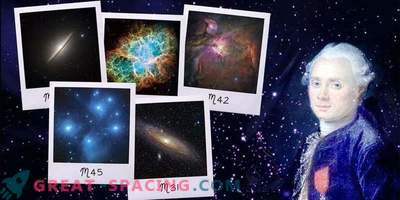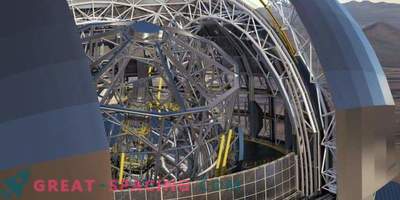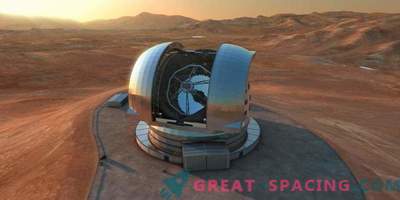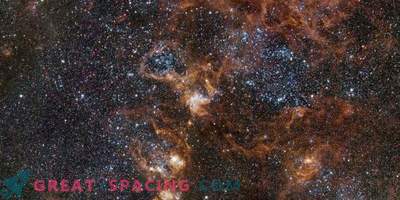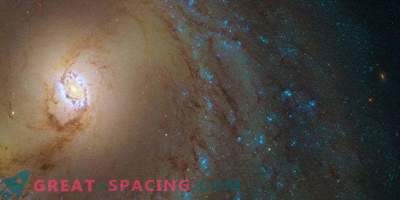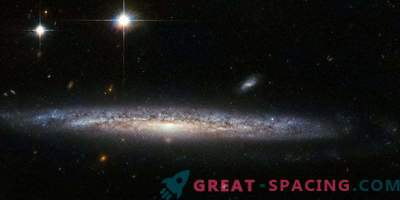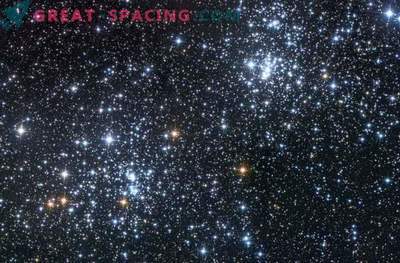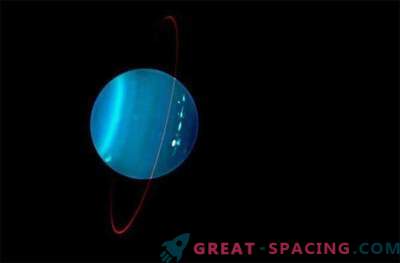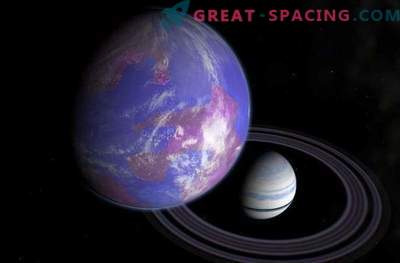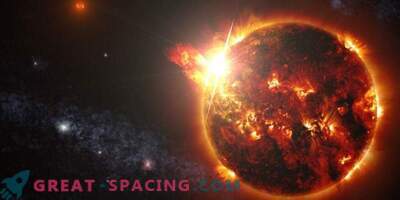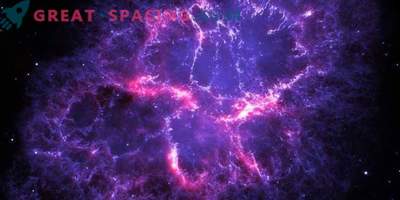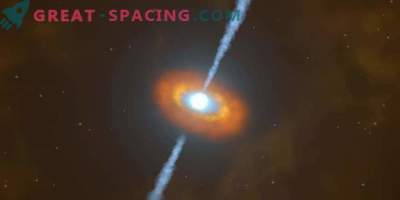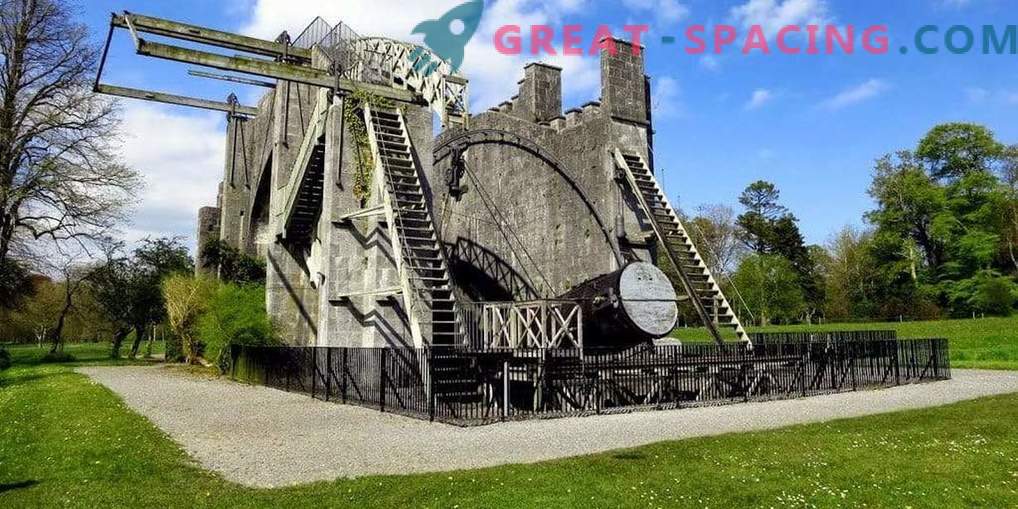
We have already described one of the largest telescopes of his time, owned by William Herschel (“What did William Herschel's giant telescope look like?”). Let's get to know the amazing Leviathan.
Creating a telescope
The idea belongs to astronomer William Parsons (Earl of Ross), who built the large Leviathan telescope in 1845 on the territory of the family estate (Birr Castle). Work began in 1839. At that time, Parsons was able to improve the methods of casting, grinding and polishing large telescope mirrors.
In 1840, Parsons created the first 1.83-meter mirror. Later he will make two such mirrors, which allowed him to continue working with the telescope, if one of the mirrors was getting dark. The final design with the finished tube was stretched to a length of 16.5 m, where only 3 tons accounted for the weight of the mirror. If we talk about total weight, the telescope reached about 12 tons.
Design Features
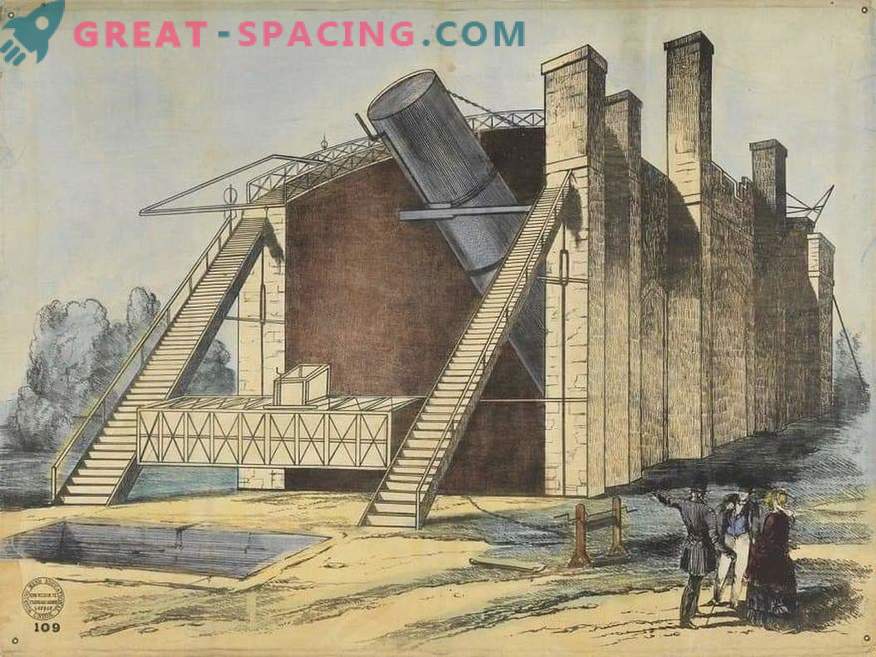
The tube was supported at the end of the mirror by a universal joint (with two axes), which allowed it to be tilted under a wide range of heights. With the help of a chain and a counterweight, it was possible to keep the telescope in balance, and the second chain with a winch controlled the height.
Parsons tube design resembled Newtonian with an eyepiece on the west side. At a low altitude, a platform was set up for an observer who accessed the eyepiece from a wooden gallery.
What are you watching?
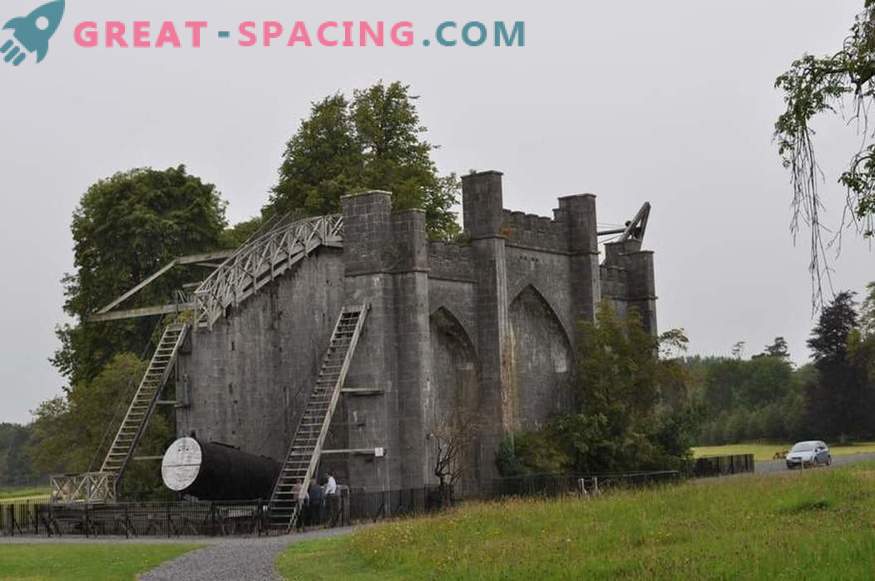
Lord Ross telescope. A black pipe with a white lid rises and falls between two stone walls, and not a wooden frame used by Herschel. The telescope was powered by a winch located behind it. The observer was on the platform at the top of the telescope, like the 48-inch Herschel model. Since the pictures were better, Lord Ross was able to detect spiral arms in galaxies. At that time, no one could explain this discovery.
Most of all, Parsons was interested in deep space objects from the catalog of Charles Messier and the celestial bodies in the list of John Herschel. Among the objects were star clusters and various nebulae.
In his research, the astronomer realized that some of the nebulae were endowed with a spiral structure, which hinted at the presence of dynamics. The most notable object studied was the Messier 51 spiral nebula. We now know that this is the Whirlpool galaxy, 23 million light-years away.
Postscript
The Leviathan telescope was actively used until 1890. And until 1917, he was considered the largest telescope in the world. But in 1908, the device was partially dismantled, and one of the mirrors in 1914 was sent to the Science Museum in London. In 1997, they decided to install a copy of the telescope on the territory of Birr Castle, but deprived it of a working mirror (it was added 2 years later).

